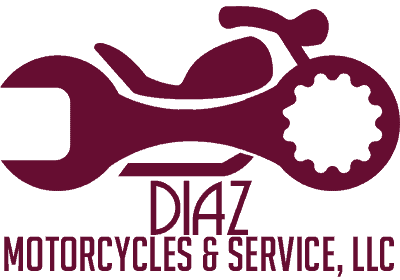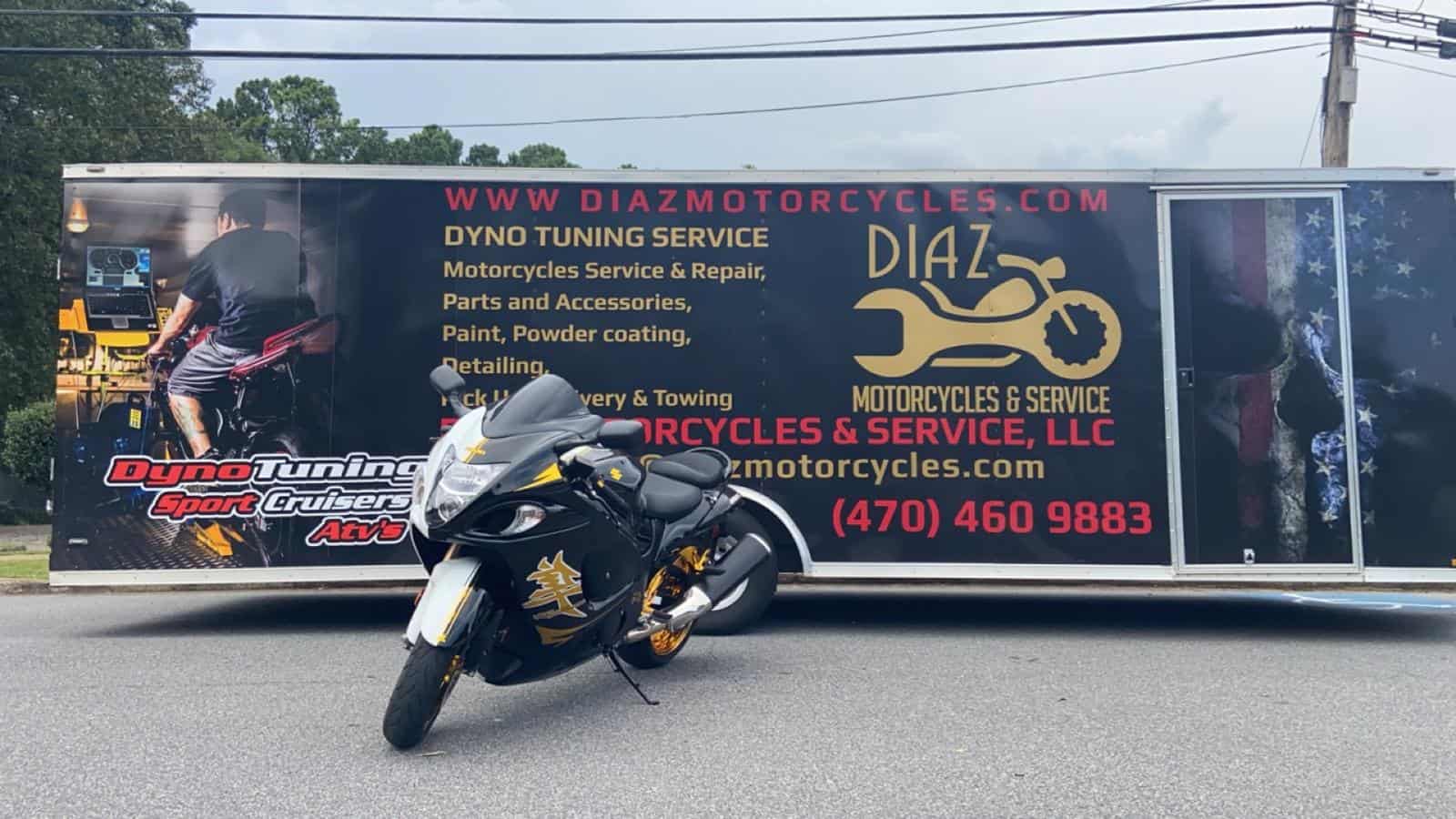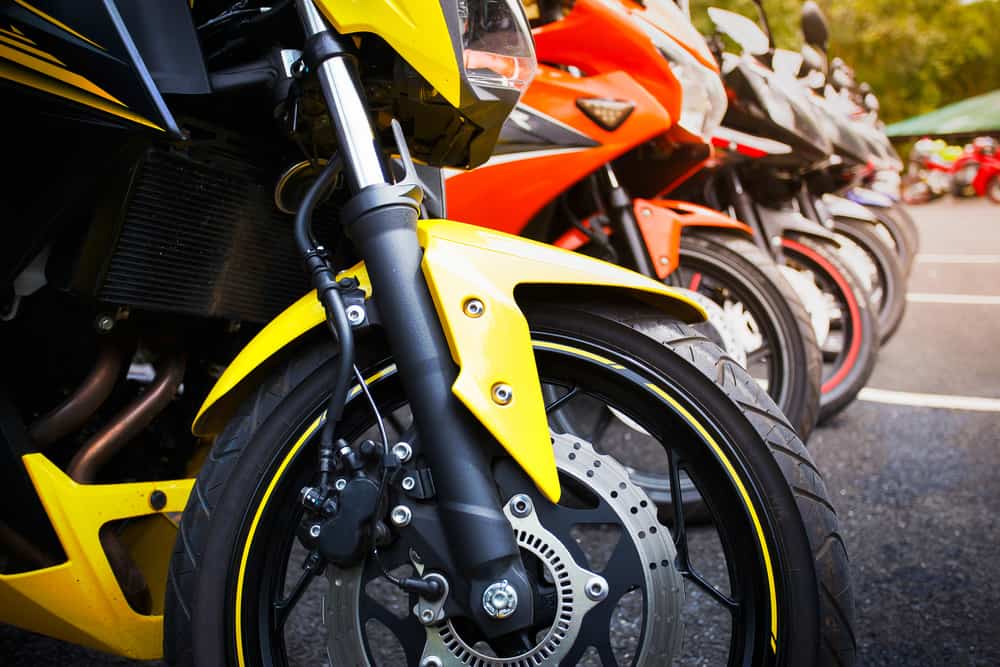Summary:
Simple Motorcycle Maintenance You Can Handle Yourself
The good news? A lot of motorcycle upkeep is actually pretty straightforward. Motorcycle preventative maintenance is typically much simpler than that of cars. Motorcycles are smaller, have fewer parts that are easier to access, and are consequently much easier to maintain.
Think of it this way: your bike wants to be maintained. Unlike cars, where everything’s buried under plastic covers and crammed into tight spaces, motorcycles put most of their important bits right out in the open. Motorcycles, in general, are much simpler machines than their four-wheeled counterparts. Nearly every component is just hanging out in the open, ripe for the picking.
The key is knowing where to start and what you’re actually capable of handling safely.
Basic Tasks Every Rider Should Master
Let’s start with the no-brainers—the stuff that’s not only safe to do yourself but actually saves you real money over time. Most experts think owners should absolutely know how to change their own oil and filter as well as the air filter because this is cheap and easy service.
Oil changes top the list. You can do a full oil change without ever laying on the ground, or removing any covers or skid plates. Go ahead, do the whole thing from your chair, relax and put your feet up. Most bikes make this almost embarrassingly easy compared to cars. The drain plug is usually right there, the filter’s accessible, and you’re done in 20 minutes.
Chain maintenance is another winner. To remove grime and gunk from your chain, you can use either a specialized chain cleaner or normal kerosene. Spray it down, wipe it off and then do another pass for good measure. Once the chain is fully dry, hit it with some motorcycle chain lubricant. Clean it, lube it, check the tension—this is basic stuff that keeps your bike running smooth and prevents expensive sprocket damage down the road.
Tire pressure checks should be part of your routine. Your tire pressure should be checked more frequently, at least once a month. The smallest pressure differences can cause fairly drastic alterations in the way a motorcycle behaves, even at low speed. If you ever feel like your bike is a big sloppy mess on turn in, or you just don’t feel as confident at the helm, check your pressures.
Battery maintenance is straightforward too. It’s better to replace a battery on your terms than to be at the mercy of a shop or dealership, and potentially adding the cost of a tow to the repair bill. Clean your terminals, then coat with dielectric grease to prevent corrosion. Most battery issues are actually connection problems, not dead batteries.
The DIY Approach: Benefits and Realistic Expectations
Let’s start with the no-brainers—the stuff that’s not only safe to do yourself but actually saves you real money over time. Most experts think owners should absolutely know how to change their own oil and filter as well as the air filter because this is cheap and easy service.
Oil changes top the list. You can do a full oil change without ever laying on the ground, or removing any covers or skid plates. Go ahead, do the whole thing from your chair, relax and put your feet up. Most bikes make this almost embarrassingly easy compared to cars. The drain plug is usually right there, the filter’s accessible, and you’re done in 20 minutes.
Chain maintenance is another winner. To remove grime and gunk from your chain, you can use either a specialized chain cleaner or normal kerosene. Spray it down, wipe it off and then do another pass for good measure. Once the chain is fully dry, hit it with some motorcycle chain lubricant. Clean it, lube it, check the tension—this is basic stuff that keeps your bike running smooth and prevents expensive sprocket damage down the road.
Tire pressure checks should be part of your routine. Your tire pressure should be checked more frequently, at least once a month. The smallest pressure differences can cause fairly drastic alterations in the way a motorcycle behaves, even at low speed. If you ever feel like your bike is a big sloppy mess on turn in, or you just don’t feel as confident at the helm, check your pressures.
Battery maintenance is straightforward too. It’s better to replace a battery on your terms than to be at the mercy of a shop or dealership, and potentially adding the cost of a tow to the repair bill. Clean your terminals, then coat with dielectric grease to prevent corrosion. Most battery issues are actually connection problems, not dead batteries.
When to Call a Professional Motorcycle Mechanic
Here’s where things get serious. Some motorcycle repairs aren’t just difficult—they’re potentially dangerous if done wrong. Well, so is watching YouTube videos on motorcycle brake rebuilds and deciding that you can just follow the instructions. Your motorcycle’s brakes are your lifeline. Their proper operation can stand between you and death.
The line between DIY and professional work isn’t always obvious, but there are clear signals that should make you reach for your phone instead of your wrench. A professional should be consulted if more severe issues like engine trouble emerge. Following proper motorcycle safety inspection procedures helps ensure your bike is ready to take on the road.
Safety-Critical Systems That Need Professional Attention
Brakes are the obvious starting point. Tasks involving safety components—such as brakes, suspension, and electrical systems—should be handled by a professional. These parts are essential for safe riding, and mistakes can be dangerous. Sure, you might be able to swap brake pads on a car, but motorcycle brake systems are different. The tolerances are tighter, the consequences of failure are more severe, and the diagnostic process requires specific knowledge.
Brake defects are among the most perilous issues a motorcyclist can encounter. Faulty brakes may fail to engage properly, leading to an inability to stop or reduce speed effectively. Recognizing signs of brake failure, such as unusual noises or a spongy feeling when the brake lever is pressed, is critical for rider safety. If you’re experiencing any of these symptoms, this isn’t the time to experiment.
Electrical systems are another professional territory. Motorcycles depend heavily on a compact electrical system. A single corroded wire, faulty relay, or worn-out switch can leave your lights flickering, your starter failing, or your signals dead. Modern bikes with more electronics (ABS, traction control, ride modes) are even more sensitive to electrical issues.
Electronic diagnostics require professional tools. Modern motorcycles have advanced electronics and computer systems that require professional diagnostic tools. If your bike’s check engine light comes on, a trained mechanic will be able to identify the issue accurately and fix it promptly. The same applies to motorcycles—maybe even more so, since you can’t just ignore a problem and keep riding safely.
Suspension work falls into this category too. Suspension issues are among the most overlooked signs by bike riders. It leads to rough rides, poor handling, unwanted bumpiness, oil leakage, lack of damping, uneven wearing of tires, or unusual noises from suspension. Suspension affects how your bike handles, stops, and responds to road conditions. Get it wrong, and you’re not just looking at poor performance—you’re looking at a potential crash.
Complex Repairs That Require Professional Tools and Expertise
Engine work is where most DIY efforts should stop. Costs for a motorcycle engine rebuild can range from $3,000-7,000. Labor costs that range between $30-75 per hour may add an additional $300-1,500 in cost to the rebuild of your motorcycle engine. These aren’t just expensive repairs—they’re complex ones that require specialized knowledge, precision tools, and experience.
When determining how to best approach the rebuild of a motorcycle engine, cost is likely one of the biggest factors. While you can do it yourself, it should be noted that completing an engine repair is more difficult than other motorcycle maintenance like repairing its frame, and it is not something a casual or occasional hobbyist should attempt without training.
Transmission and clutch problems are similar. Slipping clutch, unusual noise, difficulty in shifting gears, and lower mileage are some of the common problems which affect the life of the clutch. A bike’s clutch is a robust component that usually needs attention. Hence, you must adjust the clutch cable to the correct tension. While cable adjustment might be DIY territory, internal clutch work requires pulling the engine apart—definitely professional territory.
Fuel system issues can be tricky and dangerous. Fuel system defects can lead to leaks, which pose significant fire risks, especially in the event of a crash. Issues with fuel lines, pumps, or tanks can stem from design flaws or material failures. Fuel vapor is explosive, and working on pressurized fuel systems requires specific safety procedures and tools.
Carburetor rebuilds might seem like something you could tackle, but they’re more complex than they appear. The main reason for this problem is fuel cannot flow properly to the engine. By using the carburetor the engine may start in this type of situation. Getting the mixture right requires experience and often specialized testing equipment.
The cost of getting these repairs wrong can be substantial. Motorcycles are prone to surprises—electrical failures, clutch problems, or blown gaskets are just a few examples of issues that can arise without warning. To avoid being blindsided by costly repairs, consider setting up a separate emergency fund. On average, unexpected repairs can range from $200 to $2,000 depending on the severity of the issue.
Making the Right Choice for Your Motorcycle and Your Safety
The decision between DIY and professional service isn’t about proving how mechanically inclined you are. It’s about making smart choices that keep you safe, save you money in the long run, and keep your bike running reliably. In the battle between DIY motorcycle repairs and professional technicians, there is no clear champion. Both paths have their pros and cons, ultimately depending on your mechanical expertise, time availability and budget. Do-it-yourself repair services can be a satisfying experience that promotes knowledge and self-reliance, while professional technicians provide experience, efficiency and satisfaction.
The sweet spot? Handle the routine maintenance yourself—oil changes, chain care, tire pressure, and basic cleaning. These tasks build your confidence, save money, and help you understand your bike better. But when it comes to safety-critical systems, complex diagnostics, or repairs that require specialized tools, that’s when you call the professionals.
Whether you decide to do your own repairs or take your motorcycle to an experienced professional, always make safety and regular maintenance a priority. Remember, a well-maintained bike is a safe bike, and sometimes the smartest thing you can do is admit when a job is beyond your skill level.
When you do need professional help in Cobb County, GA, we at Diaz Motorcycles and Service, LLC have the expertise, tools, and experience to handle everything from complex engine repairs to routine maintenance you’d rather not tackle yourself. The key is knowing when to make that call—and now you do.



